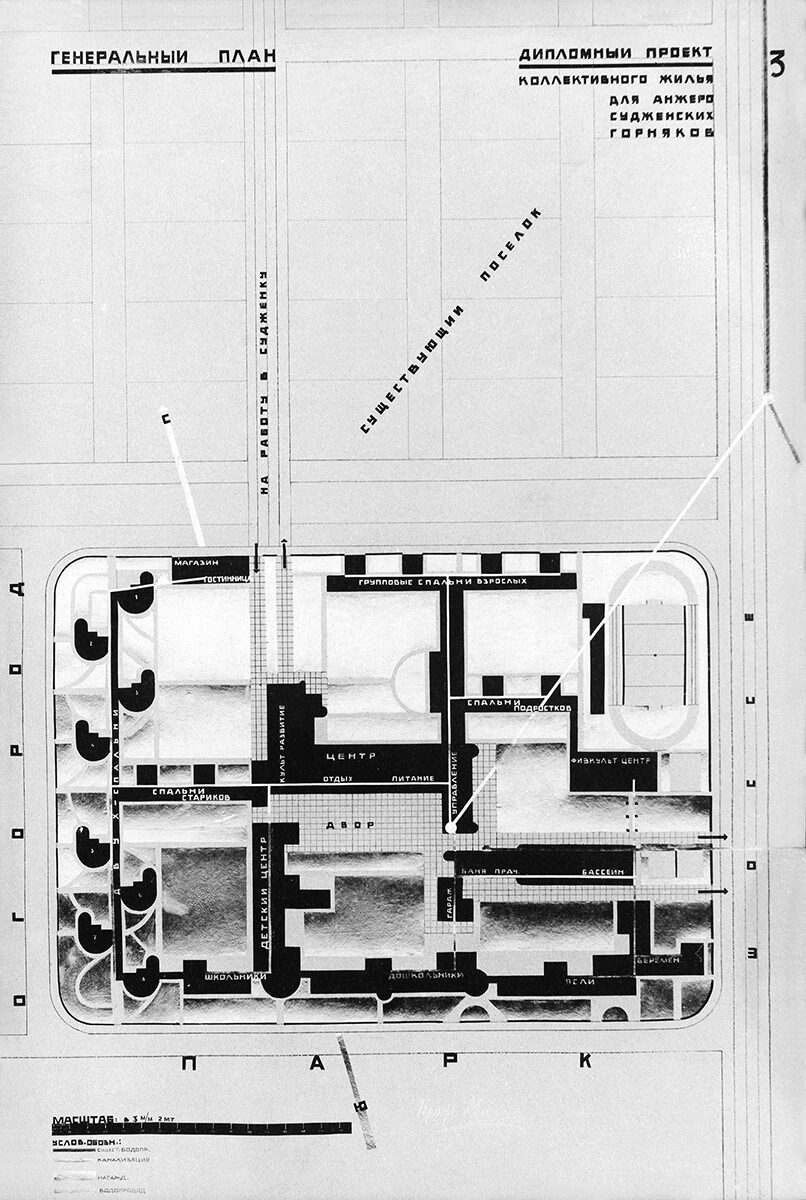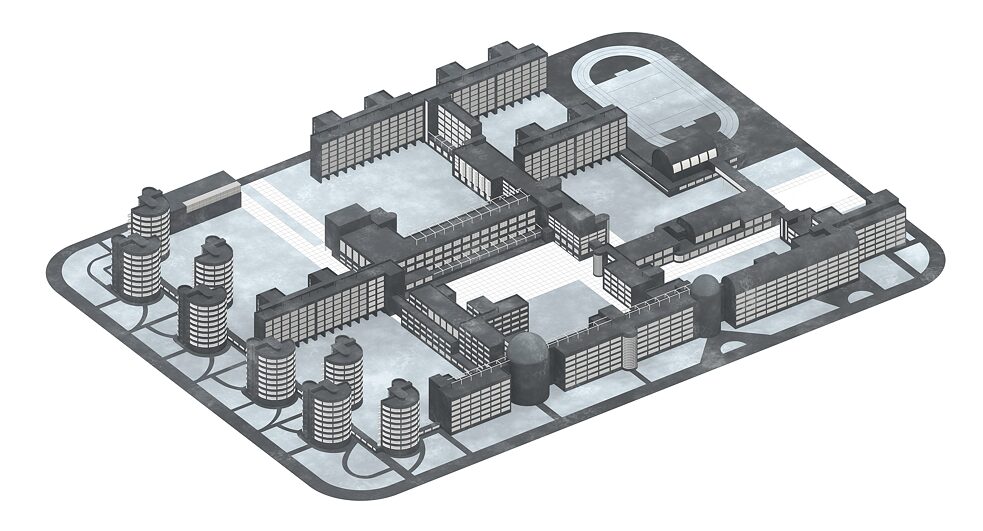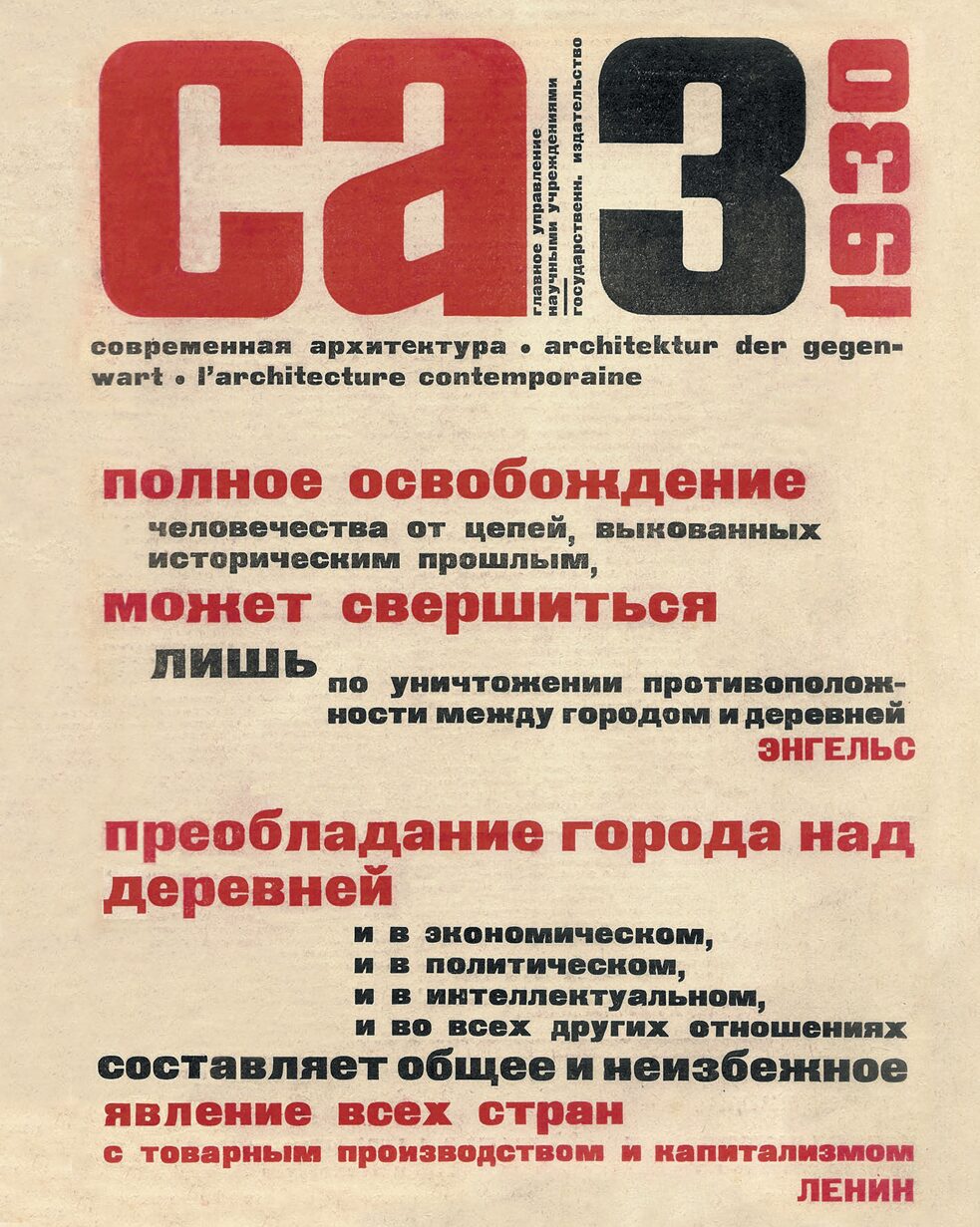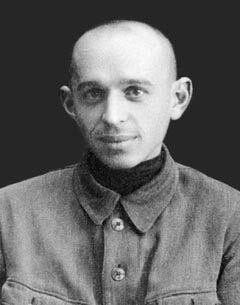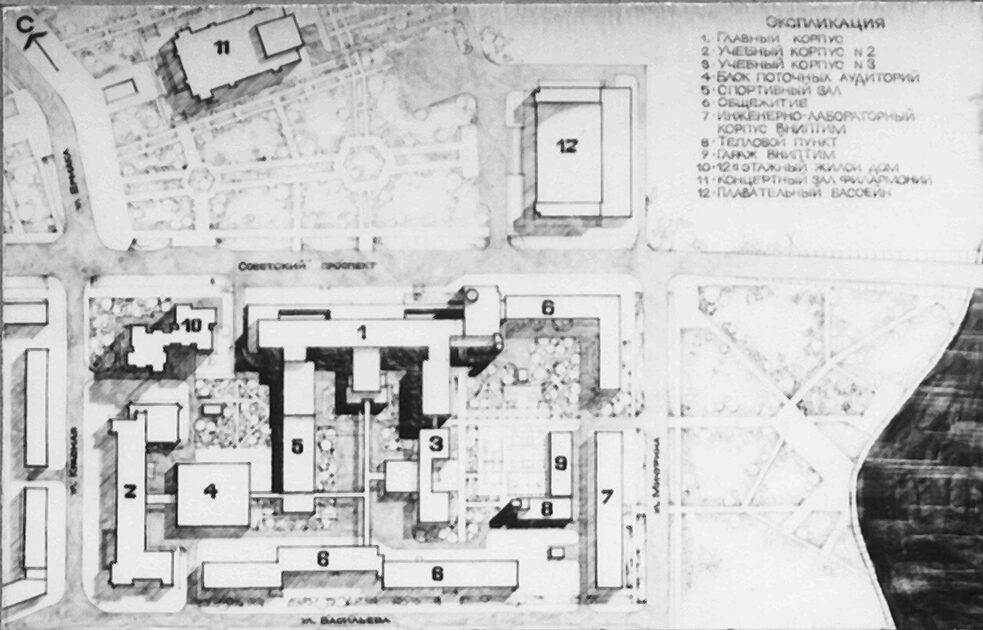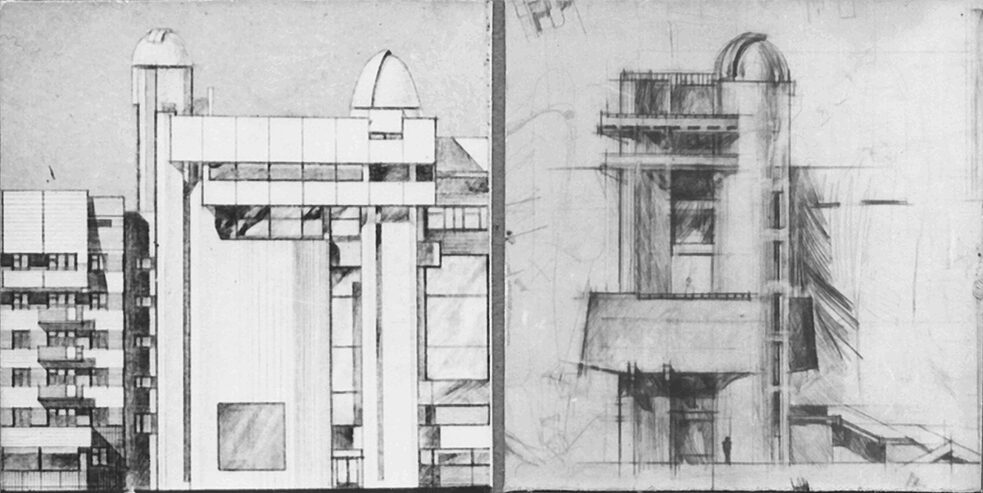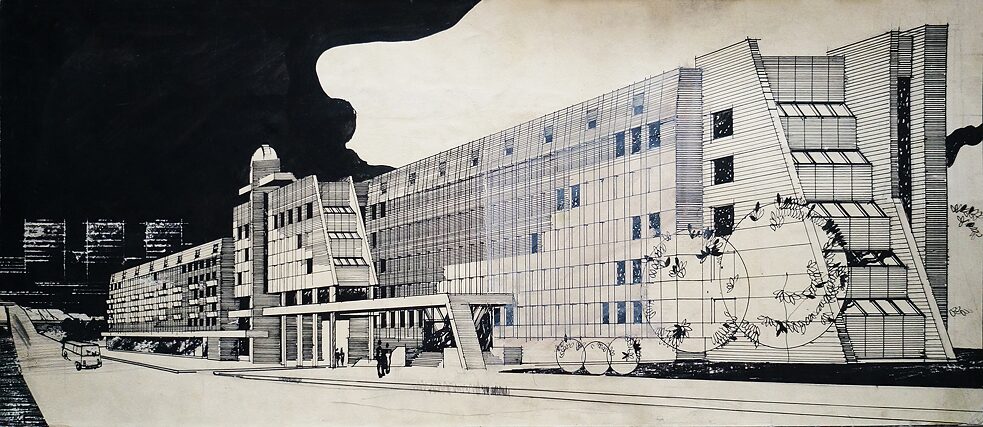Collective housing for miners in Anzhero-Sudzhensk
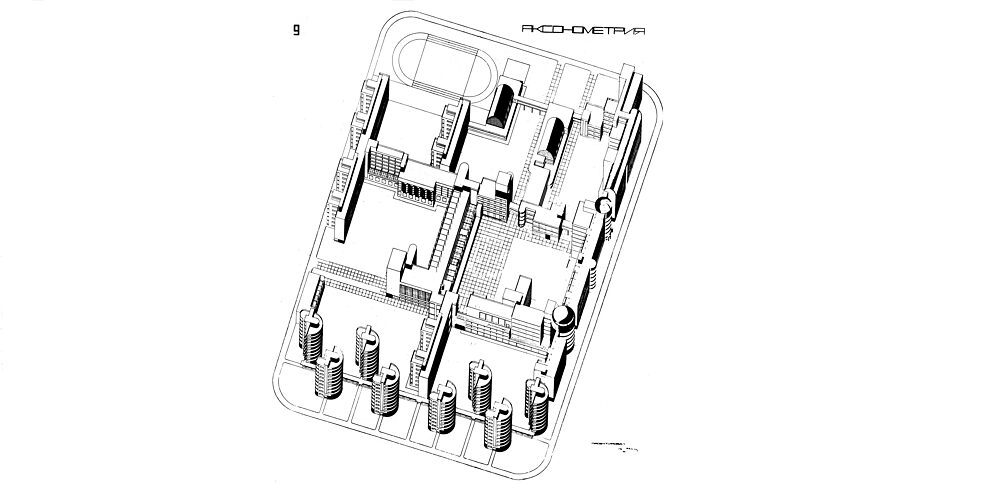
A qualifying project of collective housing for miners in Anzhero-Sudzhensk, Nikolay Kuzmin, 1928
The design project of a commune building and the very personality of Nikolay Kuzmin had an incredible impact on development of modernism in Siberia. Kuzmin worked as an architect under Lenin, all the way to Gorbachev’s time in government. A student of the Construction Engineering department of the Siberian Technological Institute, Nikolay Kuzmin was a member of the OSA constructivist group, one of the founders of SIBSTRIN (Siberian Construction Institute) and part of the Novosibirsk architectural school/movement. He became world-famous as “the architect who vulgarized social transformations”. Kuzmin’s biography unites all the generations of the Siberian modernist architects; he taught in SIBSTRIN from the 1930s to the 1980s.
Nikolay Kuzmin belonged to the first post-revolution generation of architects who came to the institute to study architecture after graduating from a preparatory school for young workers. Influenced by the constructivist ideas of shaping “the new man”, Kuzmin created a commune building designed to house 5,140 residents. In his design, he used the principles of “scientific organization of living”, investigating the common life of miners from birth to death, and aiming at optimizing this way of life by means of architecture and collective living practices. A commune is an autonomous reinforced concrete complex consisting of functional blocks connected by heated passages. Kuzmin’s design comprises residential, cultural-educational, sports, and sanitary-medical buildings, and a system of utility services. The straight road from the exit of the “automatic changing-room” of the commune building led to the mine entrance. The residential blocks corresponded to a division of four age groups: children, teenagers – who were meant to live separately from their parents, adults, and the elderly. Reaching a certain age, citizens moved to a specially designed block. The residential blocks were meant only for sleeping. Kuzmin designed group dormitories for six and eight persons separated by gender, as well as “couple bedrooms” for couples. The elimination of housework and of domestic abuse was the principal issue: housework was becoming a paid profession — that was Kuzmin’s idea of women’s liberation.
The social environment of the time also needs to be explained. By the end of the 1920s, Anzhero-Sudzhensk was a fast-growing and chaotically developing town. Devastated by the civil war, the rural population moved to towns in search of work in the mines and settled in dugouts, making the social situation even more acute. People lived in unsanitary conditions, men drowned themselves by drinking heavily, women suffered domestic abuse, children were victims of tuberculosis, and much more. On average, a resident lived with about three-square-meters floor space. The standard of living offered by Kuzmin’s project differed drastically from the actual living conditions of the workers of the time.
In 1928, the project became officially recognized. At the invitation of the leading thinker and leader of the constructivists, Moisey Ginzburg, Kuzmin made a presentation at the all-Union congress devoted to housing construction. Based on the presentation, a resolution was passed: Kuzmin’s commune was recognized as exemplary. The design was published in the Modern Architecture journal, issue 3, 1930.
As the country’s policy changed in the 1930s, the OSA leaders Moisey Ginzburg and Roman Higer, driven by the attempt to escape the pressure of the Stalinist campaign of “mastering the classic heritage”, named Kuzmin an extremist architect. Kuzmin’s project immediately turned from triumph to the epitome of blatant social vulgarization, the curse of many years to come. When translated by the biased Stalinist opinion, the design and personality of Kuzmin became a part of the history of Soviet and world architecture. Such an opinion must however be revised based on direct scrutiny of the design project, the social conditions of Anzhero-Sudzhensk of the time, and the preceding and subsequent housing policies that were implemented.
Further on, Nikolay Kuzmin worked on the design of SIBSTRIN (1933) and on a number of other large residential and public buildings in Novosibirsk and Krasnoyarsk. He became the chief architect of Novosibirsk (1938), and was one of the first graduates of the Siberian Technological Institute to defend thesis in architecture (1941). He occupied the position of dean and of professor of the Institute’s architecture department. Kuzmin continued putting forth innovative ideas like using zeppelins in large-panel construction, using peat blocks in construction, and designing replicas of the commune building. His ideas were implemented under the new names, for example “super-infill construction”, used to implement the design of the Kemerovo State University (1978-82). Many aspects of the university complex repeat the design of Kuzmin’s 1928 commune building.
